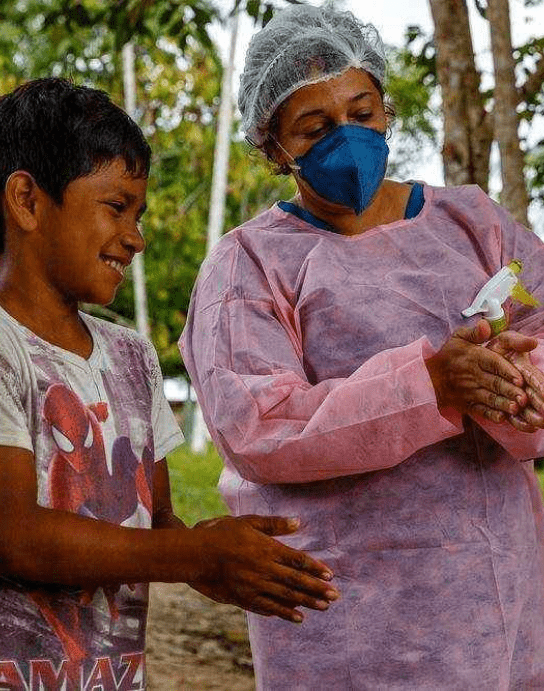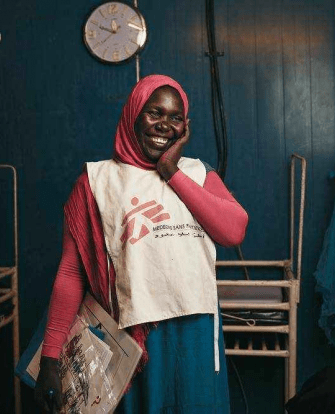A small makeshift raft made from plastic sheeting and filled with dry grass drifts along the Nile River’s current. On it sits a family of eight. Everything they own is on the raft: some clothes, and a few cooking pots that are mostly filled with waterlilies plucked from the water—their only food. Behind them, their village is submerged by the floodwaters. They had to leave quickly before the water got too high for the children and the elderly to wade through.
As many countries in eastern Africa suffer the worst drought in four decades, South Sudan sits uneasily on the opposite end of the spectrum—saturated by years of intense flooding that has affected more than one million people in the country. The floods have displaced hundreds of thousands of people, killed millions of animals, and destroyed thousands of acres of crops, compounding an escalating food security crisis in the country. The UN World Food Program estimates than more than 75 percent of South Sudan’s population is in need of food assistance.
Doctors Without Borders/Médecins Sans Frontières (MSF) is running outreach services and mobile clinics to ensure health care is available for the most vulnerable people in remote areas. MSF teams are also witnessing an alarming increase in rates of moderate to severe acute malnutrition. From January to September this year, more than 4,200 children were treated for malnutrition across MSF medical facilities in South Sudan. Large swathes of stagnant floodwater have also become the perfect breeding ground for mosquitoes. Between July to September this year, MSF treated 81,104 patients with malaria.
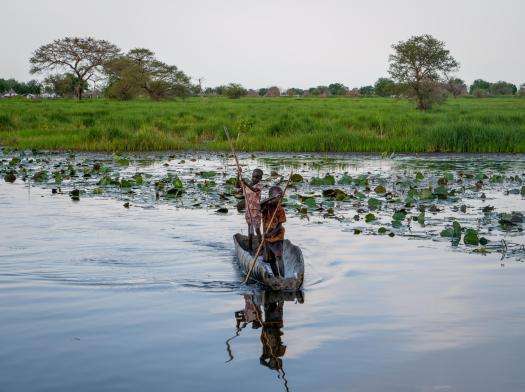
Boys steer a canoe near Old Fangak. Due to the flooding that has devastated the area for the past four years, the only way to get around is by canoe or boat. South Sudan 2022 @ Florence Miettaux
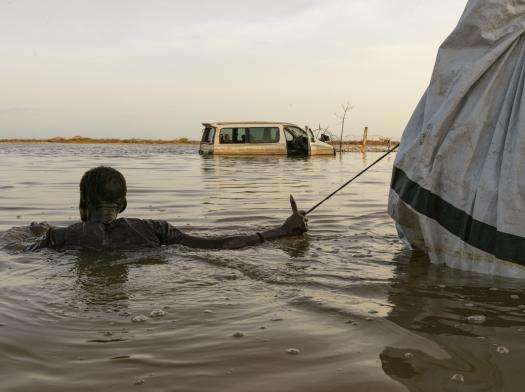
A man pulls his belongings through the flood waters in Bentiu. The floods in Unity State have devastated the area, forcing people to leave their homes in search of safety. South Sudan 2022 © Peter Caton
Flooding in the past few years has been unprecedented
Four consecutive years of flooding have left about two-thirds of South Sudan under water, with Jonglei, Northern Bahr El Ghazal, Upper Nile, Unity, Warrap, Western Equatoria, and Lakes States in South Sudan and Abyei Special Administrative Area, all experiencing severe floods in the past few months.
Seasonal flooding of the Nile River and tributaries is typical. But residents say that the rainy season has been starting earlier and persisting for longer. Even the intensity of the rain has been significantly higher than in the past. The water levels have been so high and the soil so saturated that the waters have not fully receded in the intervening dry seasons. The result is rapid inundation during the rains, compounding the crisis each consecutive year since 2019.
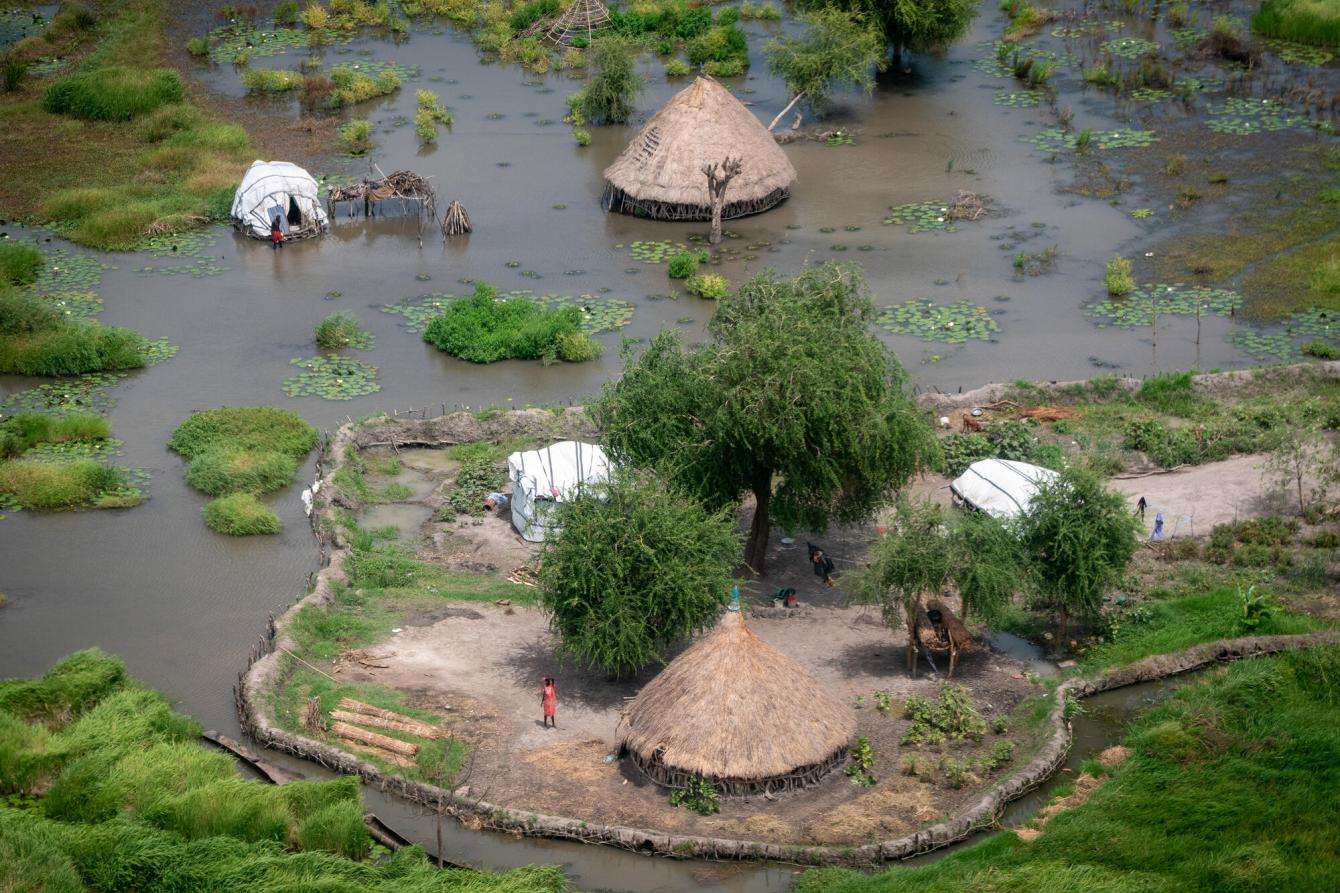
Tens of thousands of people are displaced
Communities prepare themselves for the rainy season by building dykes—walls made from soil to hold back the water from their villages. But this year, contingency preparations were not sufficient to hold back the deluge of water. In Ulang County, for instance, entire villages were submerged in October when dykes broke due to heavy rains. Health facilities, schools, and many houses were all flooded.
“The water came in the morning. Everyone went to add some mud on the dyke. We were working on it all the night but by the next morning it was out of our control. We just ran for our lives,” said Nyanyieth Bang, who lived in Doma in Ulang. “The floods displaced everyone. It flooded all the villages and the livestock drowned as well. Our house collapsed in the flood. It was a huge disaster for us.”

With nowhere else to go, tens of thousands of people have relocated to displacement camps. But the lack of shelter, safe drinking water, and sanitation facilities in the camps have led to outbreaks of infectious and waterborne diseases and other health risks. The result has been a humanitarian disaster for a population that already endures far too many of them.
Flooding makes access to health care challenging
From one day to another, villages became separated from each other, with many communities finding themselves marooned on “islands” and cut off from services, which are now only accessible by boat or canoe.
While MSF teams are actively working to respond to the needs at hand, reaching people remains a huge challenge. “Flooding impacts our capacity to deliver aid and reach communities in need,” said Aline Serin, MSF Head of Mission in South Sudan. “Many roads across the country are rendered impassable by the flooding. In a number of locations where MSF operates, our planes have been unable to land due to flooding of the airstrips. This lack of access inhibits our ability to bring in medical supplies and other essential items, which puts lives at risk. It also impacts our ability to transfer patients who require emergency treatment.”
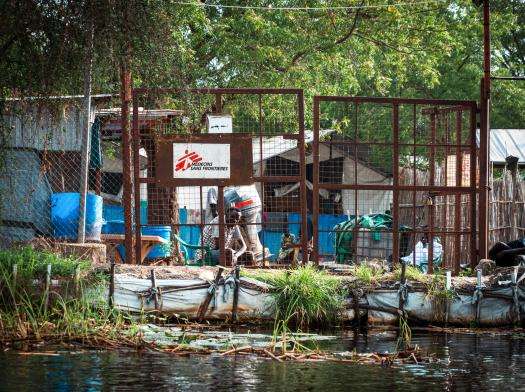
The entrance of the MSF hospital in Old Fangak, from the riverside and the quay on Zeraf River. South Sudan 2022 © Florence Miettaux
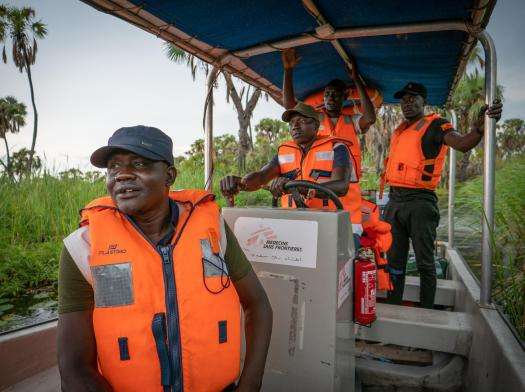
MSF teams navigate through the thick vegetation of the swamps near Kuernyapuol islands, Jonglei State. South Sudan 2022 © Florence Miettaux
Increase in aid is necessary as specter of violence looms
“Before the floods, we used to cultivate and had cattle, but now all of the cows have died because of flooding and the land we used to cultivate is no longer there,” said Tut Chuol, a sub-chief for Pahkor in Fangak County whose entire village was displaced by the floods. “Now there is no food—we just eat waterlilies. If no solution is found, we are going to die,” he added.
Although the country is now entering its dry season, there appears to be no reprieve on the horizon. The devasting impact of the loss of crops and livestock are expected to result in rising rates of malnutrition. And with the majority of the country’s population being pastoralists, there is also an increased risk of flareups of intercommunal violence as some undertake cattle raids to regain animals lost during the floods.
Despite the urgent and increasing humanitarian needs in South Sudan, international aid cuts are resulting in diminishing responses for people who have very few resources and little resilience after experiencing consecutive and multiple shocks. The response to the devastation of the flooding has fallen far short of satisfactory. Humanitarian organizations, UN agencies, and governments must step up to address the scale of the crisis and the overwhelming need for food, shelter, medical care and other basic essentials for people impacted by the floods.

How communities in South Sudan prepare for rainy season floods
Read moreHow you can help
Not everyone can treat patients in the field. But everyone can do something.
Some humanitarian crises make the headlines—others don’t. Unrestricted support from our donors allows us to mobilize quickly and efficiently to provide lifesaving medical care to the people who need it most, whether those needs are in the spotlight or not. And your donation is 100 percent tax-deductible.

